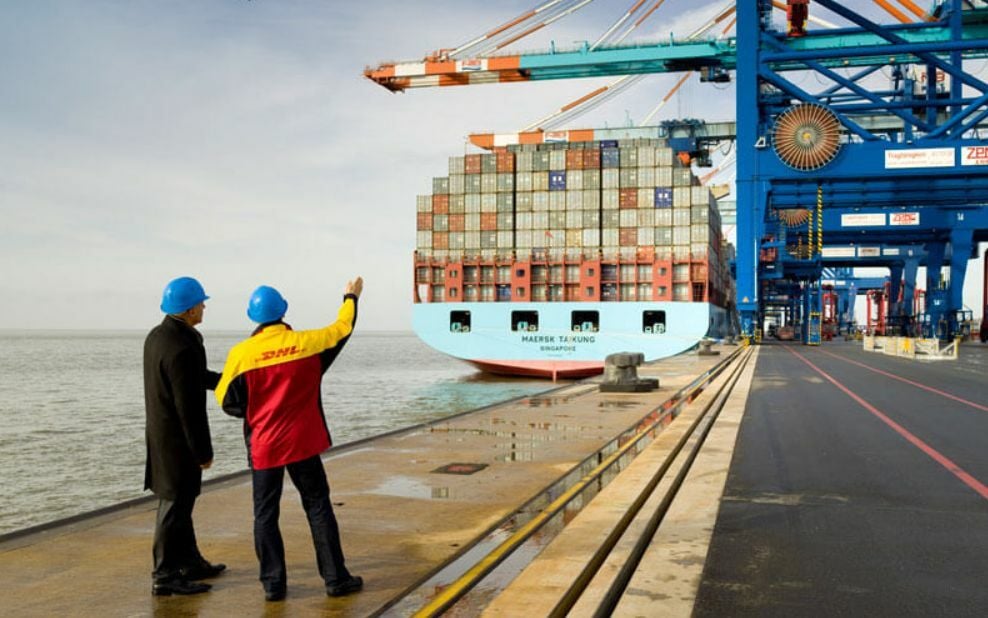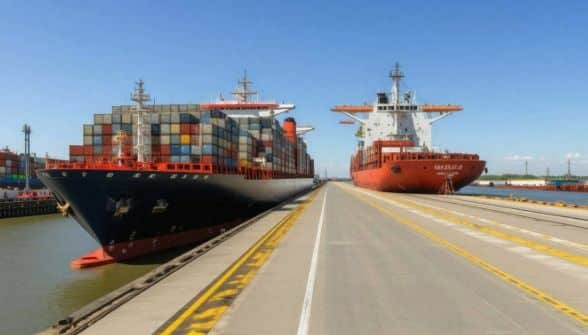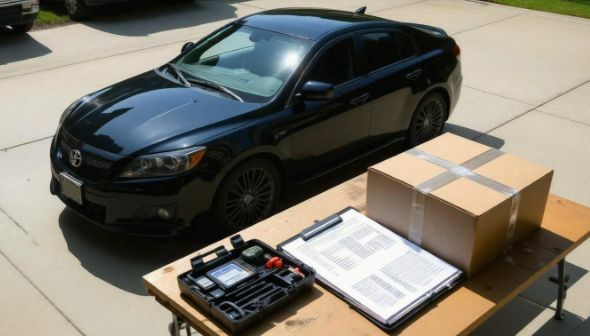Shipping a car from the US to Thailand: Regulations and costs explained

Shipping a car from the USA to Thailand may sound like a straightforward task, but it can quickly become a maze of regulations, fees, and paperwork that might leave you feeling overwhelmed. Whether you’re relocating or just want to take your favourite vehicle along for the ride, making sure you understand the basics before diving in is crucial. Picture this: you’ve done your research and picked the perfect shipping method, only to discover later that you missed a key document required by Thai customs. Trust me, I’ve seen it happen more often than you’d think! By familiarising yourself with the rules, costs, and steps involved in shipping your car, you’ll be setting yourself up for success. Let’s break down everything you need to know so that your journey from the USA to Thailand goes off without a hitch.
Yes, you can ship a car from the USA to Thailand, but it is crucial to understand the associated regulations, import duties, and necessary documentation. You will need to ensure compliance with Thai customs laws and be prepared for potential modifications if importing an older vehicle, as well as significant tariffs that can range from 0% to 80% based on the car model and year of manufacture.

Legal Obligations for Vehicle Import
Importing a vehicle into Thailand means adhering to a complicated set of regulations designed to uphold safety and environmental standards. To ensure compliance, one must grasp a few key areas, starting with adherence to local regulations. Essentially, your vehicle needs to pass specific requirements that reflect the country’s current standards which is probably the top reason it’s worth the money to hire a car shipping service.
Compliance with Local Regulations
This means that when you think about importing your car, you should first check whether it meets the specifications laid out in Thai laws. Emission standards are non-negotiable; every vehicle must comply with regulations aimed at reducing environmental impact. While it can be tempting to assume that any car will pass inspection simply because it has been roadworthy elsewhere, it’s important to do due diligence in verifying these details beforehand. Consider this a moment of preparation that could spare you headaches later on.
Failing to meet these local requirements can result in hefty fines or even refusal of entry for your vehicle—a situation best avoided.
Import License
Before you even ship your vehicle, obtaining an import permit from Thailand’s Department of Foreign Trade is crucial. This isn’t just another piece of paper; it’s a requirement designed to ensure all necessary checks are conducted prior to arrival. The application itself may seem daunting, but breaking it down makes it more manageable. Generally speaking, you’ll need proof of residency in Thailand, detailed specifications about your vehicle, and a copy of its original title.
By taking care of this aspect beforehand, you enhance your chances of smoothly navigating through customs without unexpected surprises awaiting you upon arrival.
Inspection and Certification
Upon its arrival in Thailand, your vehicle may undergo an inspection by the Thai Industrial Standards Institute (TISI). This step is vital as it assesses whether the car meets local safety and emissions norms. I recommend contacting the TISI beforehand to familiarise yourself with their expectations and ensure that you’ve accounted for every detail regarding your vehicle’s specifications.
This thorough inspection might feel like a nuisance at first glance but consider it an assurance that your vehicle is roadworthy and aligns with both national laws and safety practices. After all, no one wants a defective car backfiring on them while navigating through bustling Bangkok traffic!
Each step may seem tedious; however, understanding these requirements will set the stage for what follows next—details regarding vehicle categories and specific regulations pertaining to various types of imports.
Importation Rules and Vehicle Types
When it comes to importing vehicles into Thailand, it’s essential to recognise that different vehicle categories are subject to distinct regulations. The choices you make about the type of car can significantly influence not only your import experience but also your finances. For instance, if you’re thinking of bringing a new model from abroad, you’ll find that the rules are more lenient compared to those surrounding used cars.
New vs. Used Cars
As of 2025, importing used cars is still quite challenging due to a host of restrictions aimed at controlling the age and environmental impact of vehicles on the road. However, there’s been notable flexibility for new cars, particularly eco-friendly models. This change has made it easier for buyers keen on sustainable practices, leading to a surge in the importation of these vehicles—up by an impressive 15% this year alone.
To capitalise on these evolving regulations, it’s wise for potential importers to familiarise themselves with the specific criteria that new car models must meet for streamlined approval.
Just as important as knowing what category your vehicle falls under is understanding how vehicle configuration affects import ability.
Left-Hand Drive (LHD) Cars
In Thailand, minor details have significant implications. The country follows left-hand driving; therefore, any left-hand drive (LHD) vehicles will require conversion to right-hand drive prior to entering customs. This is not merely a formality; failing to convert could result in hefty penalties or outright refusal of entry into the country.
Importers should keep in mind that these conversions need to adhere strictly to local regulations, which adds another layer of complexity and cost to LHD imports.
It’s equally crucial to pay attention to vehicle specifics as they can dramatically impact the cost and viability of your import.
Specific Models
Certain types of vehicles face even more rigorous scrutiny upon entry. Luxury cars, for example, come with their own set of challenges—including tariffs that can skyrocket past 300% of their value. This steep tax rate can significantly burden prospective owners financially and deter many from pursuing such imports altogether.
Therefore, if you have your heart set on a luxury model, it’s vital to calculate the total expected costs ahead of time including potential taxes and fees; planning accordingly can help avoid financial surprises later down the road.
Understanding the nuances of vehicle importation provides a crucial foundation as we explore the various methods available for shipping cars internationally, each with its own advantages and considerations.
Shipping Methods: Container vs Ro-Ro

There are two primary shipping methods for transporting cars internationally: container shipping and Roll-on/Roll-off (Ro-Ro). Understanding how these methods work, along with their advantages and disadvantages, allows you to make an informed decision that aligns with your needs.
Container Shipping
Container shipping involves placing the vehicle inside a sturdy shipping container, which offers superior protection against environmental factors such as rain, wind, and debris during transit. The peace of mind that comes with knowing your car is shielded from potential damage is invaluable for many importers. However, this level of protection comes at a price; shipping costs typically range between $2,000 and $3,500 USD. This method is particularly recommended for high-value vehicles or those sensitive to damage.
Those using container shipping also have the added benefit of limited handling during transport, as the vehicle is loaded into the container and sealed until it reaches its destination. This minimises the risk of accidents during the loading and unloading phases.
On the other hand, container shipping may not always be available for every route or might have specific schedules, adding another layer of consideration when planning your shipment.
Ro-Ro Shipping
Conversely, Ro-Ro shipping presents a more economical choice, especially for budget-conscious individuals. In this method, the vehicle is simply driven onto the ship without any protective covering, which means cars are exposed to the elements throughout the journey. Costs associated with Ro-Ro shipping usually lie between $1,000 and $2,000 USD, making it a compelling option if you’re looking to save money.
Although Ro-Ro simplifies the loading process—vehicles drive on and off—this simplicity comes with its drawbacks. Exposure to weather conditions can lead to scratches, rust, or other types of wear if you’re not careful.
While more widely available compared to container options, Ro-Ro services may also vary in frequency based on seasonal demand and shipping routes.
Comparison
| Factor | Container Shipping | Ro-Ro Shipping |
| Cost | $2,000 – $3,500 USD | $1,000 – $2,000 USD |
| Protection | High | Low |
| Availability | Limited | Widely Available |
| Time | Slightly Longer | Shorter Transit Time |
Both methods come with their own sets of advantages and challenges. The choice between them ultimately hinges on your budget constraints, desired level of vehicle protection during transit, and how quickly you need the car delivered. By evaluating these factors carefully before proceeding with your shipment plan, you can ensure your car arrives safely in Thailand according to your specifications.
With a clear understanding of shipping options in hand, let’s move forward to examine the essential paperwork you’ll need to facilitate this international journey smoothly.
Document Checklist for Shipping
When preparing to ship your car from the USA to Thailand, ensuring that you have all the right documents is critical. Missing even a single form can lead to costly delays or fines. Let’s break down each essential document you’ll need throughout this process to make it as stress-free as possible.
- Vehicle Title and Registration: This document proves your ownership of the vehicle. Ensure it’s free of liens and has your name on it, as Thai customs will want to verify legal ownership.
- Proof of Ownership: In addition to the title, having a Bill of Sale or purchase invoice is vital, as it emphasises your right to export the vehicle. This helps legitimise your claim in the eyes of both U.S. and Thai authorities.
- Import Permit from the Thai Department of Foreign Trade: This permit grants you permission to bring your vehicle into Thailand. It’s best to apply for it early since processing times can vary.
- Bill of Lading: This document serves as proof of shipment and outlines how your vehicle will be transported. It’s like a receipt for your car that ensures accountability throughout its journey.
- Export Declaration Forms: These forms are essential for clearing U.S. customs and sometimes may be required for the transportation company.
- Residential Proof in Thailand: Whether it’s a lease agreement or a yellow tabian baan (house registration book), this document establishes your residency status in Thailand.
- Invoice or Evidence of Purchase Price: Import duties are often calculated based on this information. Accurate documentation can help ensure you’re not overcharged at customs.
- Insurance Details: Proof of insurance coverage protects against potential damages during shipping and demonstrates compliance with local requirements in Thailand.
It’s important not just to collect these documents but also to ensure they are complete and current. One shortcut that many expats have mentioned is to translate and notarise any necessary documents before sending them off overseas.
Special Documents for Specific Cases
A user on a Thai expat forum noted, “Ensuring all documents were translated and notarised smoothed out my shipping process significantly.” This illustrates the effectiveness of being prepared, especially for non-English speakers dealing with local authorities.
Investing time upfront to gather all required documentation not only prevents headaches during the shipping process but also sets you up for a smooth transition once you arrive in Thailand with your vehicle intact.
Understanding what documentation is necessary lays the foundation for navigating the next crucial phase—selecting a reliable company to handle the logistics of shipping your car successfully.
Selecting a Trustworthy Shipping Company
Choosing the right shipping company is essential to ensuring your vehicle arrives safely and efficiently in Thailand. With various options available, not every company will meet your standards, so conducting thorough research becomes paramount. Start by zeroing in on reputation; look for companies with positive online reviews from former customers. You can typically find this feedback on forums or platforms designed for sharing personal experiences. For example, Matson Navigation, which has garnered customer loyalty over the years, received praise for its reliable service. A satisfied customer once said, “Matson Navigation handled my car like it was their own.” Such testimonials can provide helpful insights into what you might expect from a particular shipping provider.
Credentials
Next, it’s vital to verify that the shipping company possesses the necessary credentials and licenses required for international vehicle transport. This step not only ensures compliance with regulations but also shields you from potential scams. Companies that offer services without proper licenses typically raise red flags, especially if their prices seem suspiciously low compared to others in the market. You’re not just shipping a car; you’re making an investment, and protecting that investment requires due diligence.
Insurance Options
Another crucial aspect when selecting a shipping company is its insurance offerings. Ensure that they provide comprehensive coverage for your vehicle during transit. Think of it this way: while you may trust the company to handle your car carefully, unforeseen circumstances can occur during transportation that might lead to damages. Having insurance coverage gives you peace of mind, knowing that you’re financially protected against accidents or mishaps along the way.
Putting all these elements together streamlines your process tremendously; thoroughly vetting prospective shipping companies—evaluating their reputation, confirming their credentials, and reviewing insurance options—are essential steps toward a successful import journey. As you embark on this path, understanding potential costs related to importation is equally crucial for effective planning.
Estimating Import Fees and Taxes
Importing a car into Thailand is an exciting endeavour, but it’s crucial to prepare for various costs that go beyond just the shipping fees. Import duties form one of the core components of this financial consideration, and understanding how they work will significantly impact your budgeting process.
Import Duties
When it comes to import duties in Thailand, the rates can be quite arbitrary. Depending on your specific vehicle model, its engine size, and even the year of manufacture, these duties can range dramatically from 0% to as high as 80%. For instance, fully electric vehicles can often benefit from lower or no import duties thanks to recent government incentives aimed at encouraging greener alternatives. If you’re considering a Battery Electric Vehicle (BEV) with a manufacturer’s suggested retail price (SRP) under THB 2 million, you might find yourself paying minimal duties. This makes checking eligibility for duty incentives crucial when estimating your total costs.
Taxes
Beyond the import duties, there’s another layer of expense that will affect your bank account: taxes. Specifically, Value-Added Tax (VAT) comes into play, typically calculated at 7% of the vehicle’s declared value. So, if you’re importing a car valued at $30,000 USD, expect to add around $2,100 in VAT alone. Luxury vehicles complicate this calculation further, facing additional tax brackets which can sometimes elevate total import costs to more than three times their original value. Noticing these large differences through vehicle classification reveals just how vital it is to know what kind of car you’re planning to import.
Additional Charges
In addition to duties and taxes, you should also be aware of other charges that could inflate your overall budget:
- Storage Fees: Should there be any unexpected delays during customs processing.
- Port Handling Fees: Costs incurred for the loading and unloading of your vehicle at the port.
- Inspection Fees: Particularly for compliance checks as mandated by Thailand’s TISI (Thai Industrial Standards Institute).
If you combine all these elements—import duties, taxes, and additional charges—you create a clearer picture of what you’ll truly invest in your recent automotive acquisition from the USA.
Understanding these various fees not only helps you prepare financially but also ensures that no surprises lurk around the corner when it’s time for customs clearance. With this knowledge in hand, your next step involves making sure that your vehicle is ready for its journey across borders.
Preparing Your Car for Shipping

When the time comes to ship your cherished vehicle across the ocean, a thorough preparation process is essential. This not only paves the way for a smooth customs experience but also helps maintain the integrity of your car throughout its journey.
To begin, one of the first steps is to clean your car inside and out. A good wash showcases the car’s beauty while removing dirt and debris that can attract unwanted fees at customs, especially if your vehicle is deemed too dirty for inspection. Shipping companies typically require vehicles to be free from personal items and clutter, so it’s crucial to clear out any belongings that might create complications during transit.
It’s important to think about how removing personal items is more than just a logistical step; it’s also about protecting your possessions. Companies generally do not insure personal items left in the car during shipping, so it’s best to pack those away securely before you hand over the keys.
Once your vehicle is spick-and-span and free of belongings, the next vital step is documenting its condition thoroughly.
Taking detailed photos of both the interior and exterior of your car can serve as an invaluable reference should any damage occur during transportation. Snapshots taken from various angles ensure that every inch is recorded, providing evidence of its pre-shipping condition. Should an unfortunate mishap occur while in transit, this documentation will come in handy when you file an insurance claim. Remember to note any existing scratches or dents beforehand, giving a comprehensive history of your vehicle’s state.
After you’ve documented everything visually, it’s critical to check all fluid levels and assess the battery situation before shipping.
Ensure that all fluids—oil, coolant, brake fluid—are at appropriate levels without being overfilled. Overly full fluids can expand during shipping, leading to leaks and possible messes inside your vehicle. It’s advisable to disconnect the battery if your shipping company recommends it; doing this can prevent complete drainage or electrical malfunctions caused by vehicle vibration during transport. Each little detail contributes to ensuring a safe arrival after its long journey.
With these details checked off, we now turn our attention to any loose parts or accessories on the vehicle.
Inspecting and securing loose elements such as spoilers, antennas, or removable accessories is crucial for their protection during travel. If you find any parts that are not firmly attached, consider removing them altogether before shipping. Loose components can shift during transit and may cause damage to both themselves and other areas of your vehicle as they move around. The primary goal here is to arrive at your new destination with your vehicle intact and in excellent condition.
By carefully following these steps—cleaning the vehicle thoroughly, documenting its condition, checking fluid levels, and securing loose objects—you set yourself up for a smooth experience while making sure that once your car arrives in Thailand, it’s ready to hit the road without any issues.
Taking these precautionary measures not only safeguards your investment but also streamlines the process from start to finish. You’ll be all set for a successful transition into Thai roads.
What are the necessary documents required to ship a car from the USA to Thailand?
To ship a car from the USA to Thailand, you’ll need several essential documents, including the original vehicle title, a bill of sale, proof of identity (like a passport), and an import permit from the Thai Department of Land Transport. It’s also advisable to have a shipping invoice and a completed customs declaration form. In 2023, statistics indicated that improper documentation accounted for nearly 30% of shipment delays, highlighting the importance of preparing these documents meticulously to ensure a smooth process.
How long does it typically take to ship a car from the USA to Thailand?
Typically, shipping a car from the USA to Thailand takes about 4 to 8 weeks, depending on the shipping method and logistics involved. For example, if you opt for container shipping, it may take closer to the longer end of that range due to loading and unloading processes. Furthermore, factors such as customs clearance, shipping routes, and seasonal demand can also influence transit times. With proper planning and paperwork, however, many can expect their vehicles to arrive safely within this timeframe.
Are there restrictions on certain types of vehicles that can be shipped to Thailand?
Yes, there are restrictions on certain types of vehicles that can be shipped to Thailand. Generally, vehicles must comply with Thai safety and emissions standards, which means that older models, typically those over five years old, may face import restrictions or higher tariffs. For instance, according to the Ministry of Commerce in Thailand, importing used cars can incur additional taxes up to 100% of the car’s value depending on its age and type. Moreover, vehicle modifications and features such as left-hand drive can also impact eligibility for shipping.
What steps should be taken to prepare my vehicle for shipping overseas?
To prepare your vehicle for shipping overseas, start by cleaning it thoroughly, both inside and out, to avoid carrying contaminants; this is crucial as many countries, including Thailand, have strict biosecurity regulations. Next, remove any personal items and ensure the gas tank is about a quarter full to minimise weight and reduce the risk of spills. Lastly, check with your shipping company for specific requirements, such as disabling alarms and documenting the vehicle’s condition with photographs. Following these steps helps prevent delays or additional costs during the shipping process.
What costs should I expect when shipping a car internationally to Thailand?
When shipping a car internationally to Thailand, you should expect costs that typically range from $1,000 to $5,000, depending on the method of transport (container or roll-on/roll-off), the distance, and any additional services like insurance and customs duties. Additionally, it’s essential to account for customs clearance fees, which can be around 30% of the vehicle’s value and other logistics costs such as port charges and inland transportation. Overall, thorough budgeting is crucial to ensure a smooth shipping process.
Latest Thailand News
Follow The Thaiger on Google News:


























